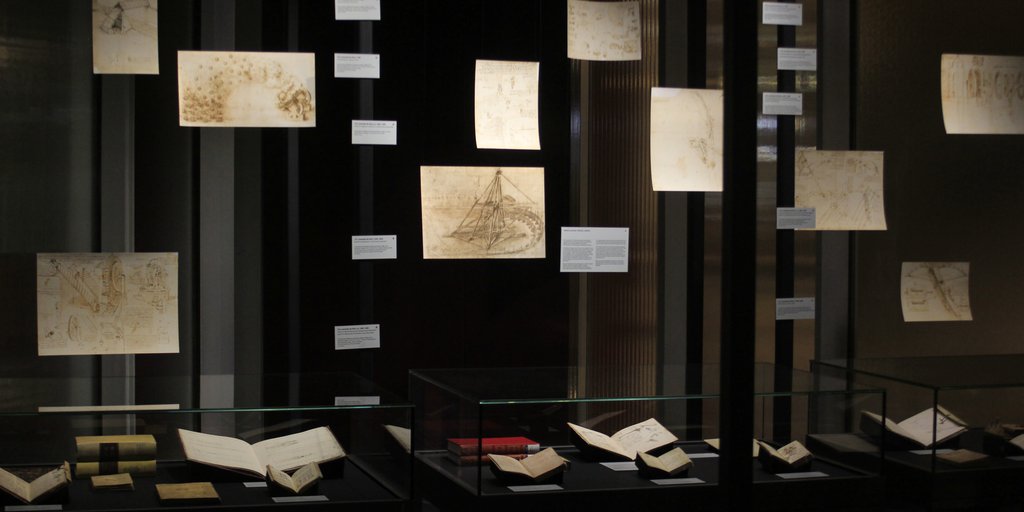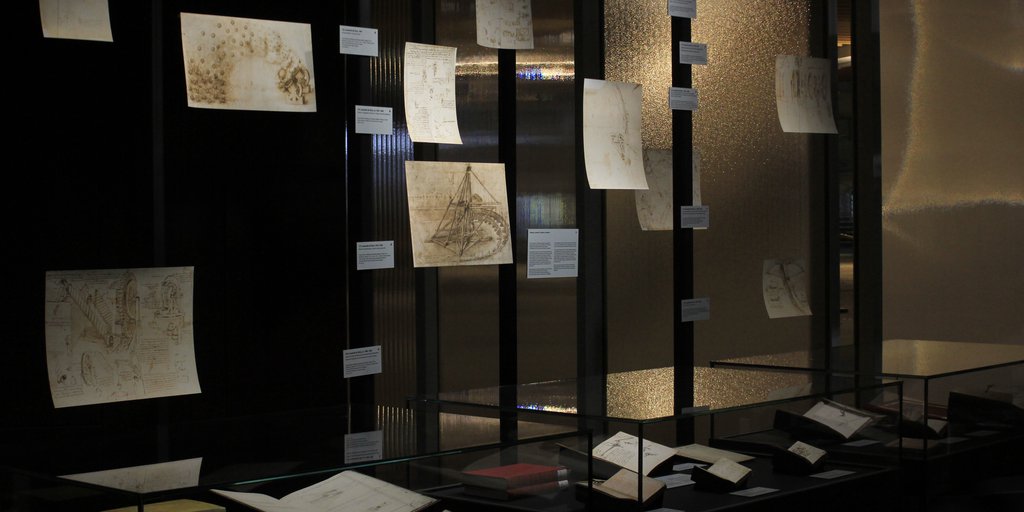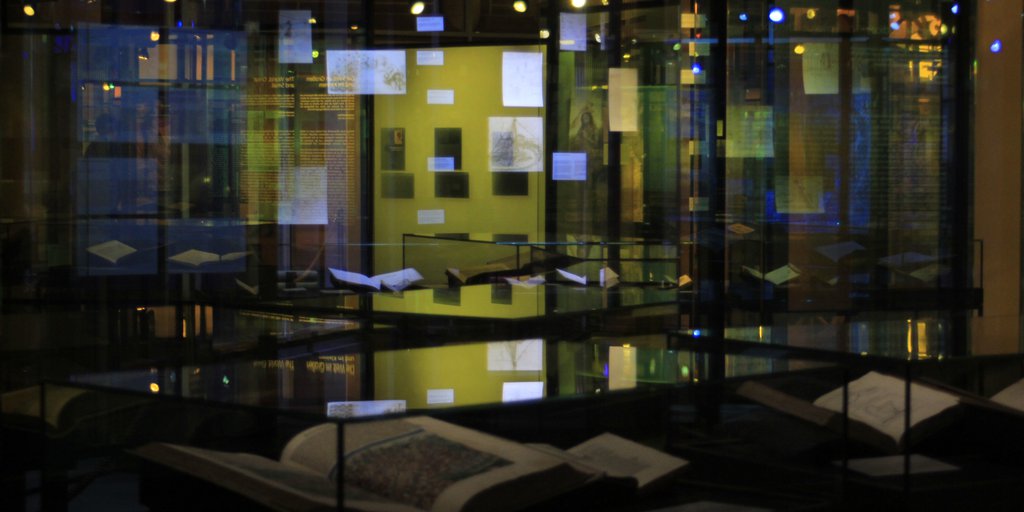
Epilogue: The Codices <
This is a collection without order, compiled from many papers that I have copied here,
hoping to put them in their respective order, according to the subjects they address …
Leonardo da Vinci
Codex Arundel, fol. 1r. Translation: Elizabeth Hughes
Leonardo’s surviving literary estate comprises over 4,000 sheets; a total of 22 volumes of illustrated manuscripts, generally known as codices, still exists today. The material is extremely heterogenous. Alongside pocket-sized sketchbooks with jottings made on the spot purely for his own use, there are large-format clean copies that seem to address an audience. What the volumes have in common is their thematic diversity, and all show traces of continual use and revision. At his death, Leonardo left the volumes to his collaborator and heir Francesco Melzi (1491/92–1567). Melzi’s heirs sold a large part of this legacy to the sculptor Pompeo Leoni (ca. 1533–1608). In 1637 the collector Galeazzo Arconati (before 1592–1649) donated several of these manuscripts to the Biblioteca Ambrosiana in Milan. They ultimately reached Paris as part of Napoleon’s spoils of war where most of them are still kept today—fortunately mostly in their original binding. Other codices took entirely different paths—though under similarly dramatic circumstances.
Codices <
 | 113.
Span of a bridge 1502 |

In 1502 Leonardo contacted the Ottoman sultan Bayezid II (1447–1512) with a plan for a bold engineering project: a bridge between the center of Constantinople (now Istanbul) and the city district of Pera. Its design revealed him to be a highly inventive engineer whose skills could match up to the authors of contemporary treatises on military and fortification (63 ■). The sketch above shows the aerial view; below this is the elevation of the arched bridge over the Golden Horn, an inlet of the Bosporus. The original construction was designed to be stabilized by outward-facing parabolic struts. As Leonardo stressed in both drawings, the previously unimaginable span of around 238 m (400 braccia) and the height of around 42 m (70 braccia) would have allowed even a sailing ship to pass underneath easily. The Topkapi Museum in Istanbul contains the Turkish translation of a related letter with further ideas.
References
Babinger, Franz, and Ludwig H. Heydenreich. 1952. “Vier Bauvorschläge Lionardo da Vinci’s an Sultan Bajezid II (1502/3).” In Nachrichten der Akademie der Wissenschaften in Göttingen. I: Philologisch-Historische Klasse. Göttingen: Vandenhoeck & Ruprecht, 1–20.
Bambach, Carmen C. 2019. Leonardo da Vinci Rediscovered. Vol. 2: The Maturing of a Genius 1485–1506. 4 vols. New Haven / London: Yale University Press, 312–313.
Pedretti, Carlo. 1988. Leonardo architetto. 2nd ed. Milan: Electa, 170–171.
Schettini, Franco. 1972. “Istanbul/Costantinopoli. Un ponte di Leonardo sul Corno d’Oro. Contributo allo studio di un disegno di Leonardo per il ponte sul Corno d’Oro.” Parametro 10: 68–79.











